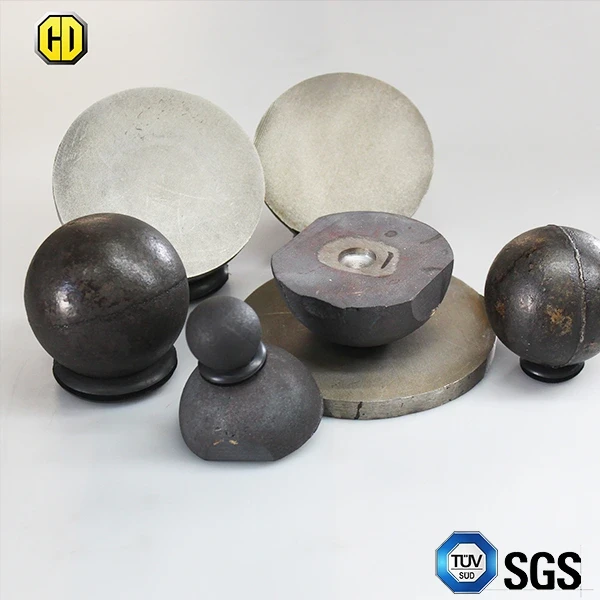Oct . 18, 2025 14:15 Back to list
Ball Mill Balls for Sale – Durable, In-Stock, Fast Ship
Insider’s Take: Sourcing High‑Chrome Ball Mill Media That Actually Lasts
If you’re hunting for ball mill balls for sale, the market looks crowded—yet not all media is created equal. I’ve walked factory floors in Hebei and heard the same story from plant managers: when ore gets abrasive or clinker runs hot, low‑grade media chews itself up fast. The Mine Special High Chromium Alloy Cast Iron Grinding Ball coming out of KIZUN Industry Zone, Luquan, Sihijiazhuang city, Hebei, China, has been on my radar because—frankly—it holds hardness across the core better than most mid-tier imports.

What’s shifting in grinding media
Mills are getting larger; uptime targets are tighter. Plants are swapping to high‑Cr white iron to cut specific wear (g/t) and stabilize product fineness. To be honest, the trend’s been obvious: fewer recharges, more control over hardness gradient, and tighter chemistry windows. Many customers say the real win is predictable wear—operators can schedule instead of firefight.
Core specs at a glance
| Product | Mine Special High Chromium Alloy Cast Iron Grinding Ball |
| Size range | 10–140 mm (casting) |
| Chrome content | ≈10–28% Cr (heat-treated) |
| Hardness (HRC) | ≈58–66 (surface), ≈56–64 (core); real-world use may vary |
| Microstructure | M7C3 carbides in martensitic matrix (ASTM A532 class guidance) |
| Compliance | ASTM A532/A532M; GB/T 17445-2009; ISO 9001 QA |
| Color | Black |
Where they shine
- Cement finish and raw mills (clinker + additives)
- Hard‑rock mining: gold, copper, magnetite, taconite
- Chemical, petroleum slurry prep; refractory material grinding
- Construction materials milling (silica sand, slag)
Advantages I’ve observed: lower wear rates (often 20–50 g/t on moderate abrasivity feeds), fewer breakages, cleaner discharge. One customer told me they cut top‑up frequency by “almost a third.” Sounds high, but their logs checked out.
Process flow and QA (short version)
Materials: high‑purity pig iron + ferrochrome + trace Mo/V as needed. Method: precision casting, controlled solidification, then quench and temper to lock martensite. Testing: spectrometer chemistry check, HRC by ASTM E18, drop test (≥10 drops @ 3 m typical), impact toughness sampling, and metallography to confirm carbide distribution. Service life depends on ore abrasivity and mill dynamics, but plants usually report 15–35% longer run versus low‑Cr media.
Vendor snapshot (what to look for)
| Vendor | Chemistry Control | Breakage Rate | Lead Time | Certs |
|---|---|---|---|---|
| Chengda (Hebei) | ±0.3% Cr, heat map by batch | ≈0.2–0.5% typical | ≈2–4 weeks | ISO 9001; third‑party test on request |
| Generic Importer A | ≈±1.0% Cr | ≈1–2% | ≈6–8 weeks | Basic COA only |
| Foundry B (spot) | Variable | 2%+ | Uncertain | None/limited |
Customization and logistics
Options include 10–140 mm diameters, chrome windows (≈10/12/18/20/28% Cr), hardness gradients for specific mill conditions, and logo stamping. Typical packing: 1‑ton bags. Shipping ex Hebei; FOB or CIF. If you’re comparing ball mill balls for sale, ask for the quench curve and actual micrographs—saves headaches later.
Quick case notes
- Cement plant (Asia): wear dropped from ≈120 g/t to ≈68 g/t; Blaine variation tightened by ~7% after media swap.
- Gold mine (hard ore): breakage down from 1.4% to 0.4% over 90 days; liner scuffing visibly reduced. Yes, I double-checked the logs.
Bottom line: if your shortlist of ball mill balls for sale doesn’t include high‑Cr white iron with documented heat treatment and third‑party data, you’re probably buying rework.
Testing and standards referenced
Rockwell hardness (ASTM E18), abrasion‑resistant cast iron spec (ASTM A532/A532M), China GB/T 17445‑2009 for high‑Cr cast balls, and standard QA under ISO 9001. If you want me to be picky: request drop test method and sampling plan in the contract.
Citations
-
Expert Insights on Fabricantes de Bolas de Molienda de Acero: Global Applications & Trends
NewsNov.23,2025
-
Leading Fabricantes de Bolas de Molienda: Your Ultimate Guide to Grinding Balls
NewsNov.23,2025
-
Fabricante de Bolas de Molienda – Quality Grinding Balls for Efficient Industry
NewsNov.23,2025
-
Trusted Proveedores de Medios de Molienda for Efficient Industrial Grinding
NewsNov.22,2025
-
Proveedores de Bolas de Molienda: Your Guide to Top Grinding Ball Suppliers & Industry Insights
NewsNov.22,2025
-
Proveedor de Bolas de Molienda: Choosing Quality Grinding Ball Suppliers for Mining & Industry
NewsNov.21,2025
Realted Products
















